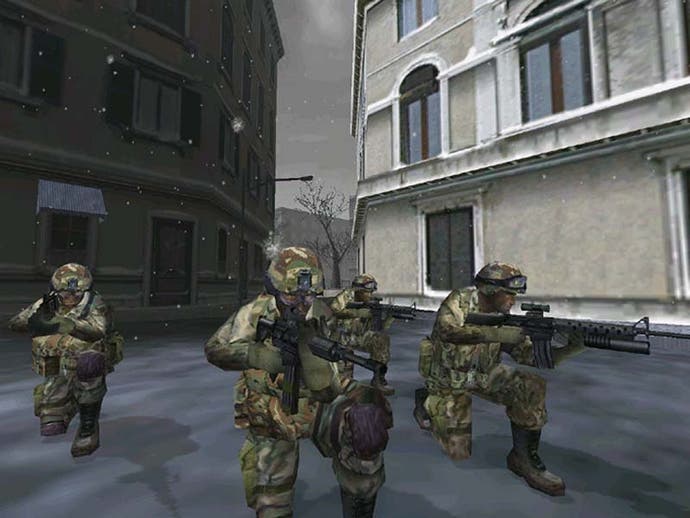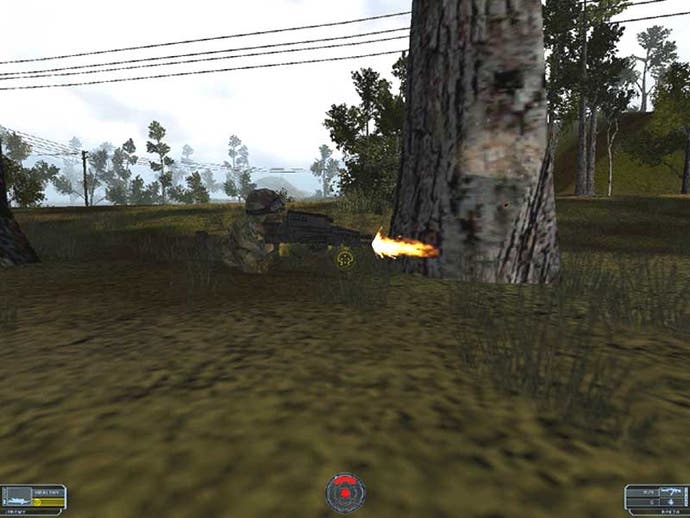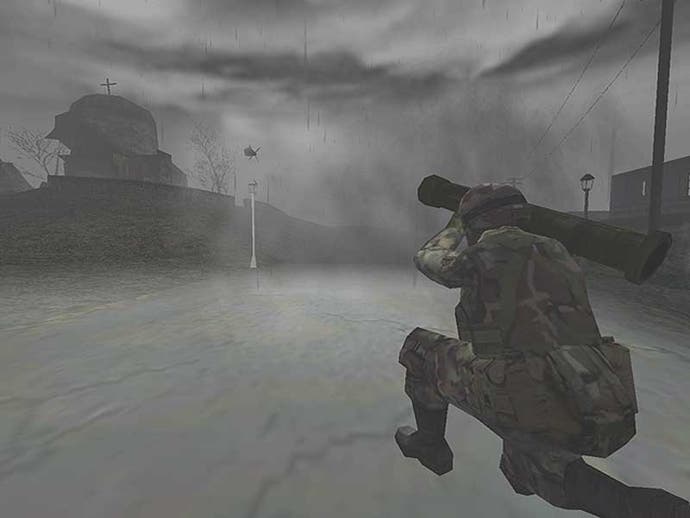Ghost Recon
Review - Martin is dropped behind enemy lines to investigate Tom Clancy's latest tactical shooter

Bring It On
Ghost Recon is the latest in the series of Tom Clancy endorsed tactical-action games which started with the pioneering Rainbow Six. As such it's a rather touchy subject at the moment, and has come under the scrutiny of the over-sensitive since the terrorist attacks on America. Thankfully though it hasn't suffered the ridiculous levels of censorship currently being forced on many new releases. There is a story backing up the fifteen mission campaign, but as usual this takes a back seat to the action. Apparently Russia has fallen under the control of nationalistic leaders whose aim is to reinstate the communist regime. First up on their agenda is the capture of Georgia, and subsequently the Baltic states of Estonia, Latvia and Lithuania. The escalating war naturally leads to a conflict with the UN, and as a result you and your platoon of "Ghosts" (you know, another band of elite covert fighting machines trained in the arts of .. whatever) are sent in to whoop some Russian booty and rescue the princess. Okay, maybe the princess will come in the patch. So far, so familiar. But after the numerous Rainbow Six mission packs, rehashes, and re-rehashes, we were anxious to see whether or not Red Storm still had what it takes to excite and enthral, and if they could come up with something worthy of our attention. We've been spoiled over the last year or two with the likes of Operation Flashpoint and SWAT3, and we were looking to Ghost Recon to provide something new to grab our attention.

The Great Outdoors
The most obvious deviation from the Rainbow Six games is the environment. It's only natural that comparisons are going to be made to those games, but it's important to remember that Ghost Recon's engine is completely new, and brings with it the ability to render sprawling landscapes. Gone are the close quarters combat scenarios of office blocks and museums, to be replaced with remote towns and valleys and .. ahem .. assaults on terrorist hideouts in hidden cave complexes. The whole game is graphically splendid, and particular loving attention has been paid to creating some wonderfully animated and skinned characters. The repertoire of animations, especially the deaths, is impressive and blends practically seamlessly. And while the landscapes themselves tend to be low on detail, the texturing and objects create a superb hostile atmosphere. As the storm clouds churn overhead, the tall evergreens sway, and the rain splatters down around your team, you really do feel like you're up against the elements as well as a few disgruntled Georgian rebels. There are gameplay changes as well. Presumably in an attempt to make things more accessible to casual gamers, the planning phase of the old Rainbow games is gone and has been replaced with simple waypoint-placing on an in-game map. While the effort put into attracting new players is laudable, it's actually far too simple, and doesn't offer as much control over your platoon as you would like. Indeed, the map is so simplistic that you're unaware of any advantage the enemy might have as you send your troops out across a landscape, only to lose them one by one to an enemy sniper as they bumble across the landscape attempting to reach your waypoint.

Hard As Nails
What the game is lacking in true tactical elements, it certainly makes up for in tense action and gritty realism though. Make no mistake - Ghost Recon is as hard as nails from the outset, and almost every single mission will require replaying until you get it right. It's rare for you to get through a scenario without losing a soldier, but those who do make it are rewarded by the interesting "combat points" system. Similar to experience points in role-playing games, these are awarded to any survivors after each successful mission and can be spent on improving one of their attributes. It's up to you whether you would rather have better marksmen or more silent troops, and the system forces you to really take care of your men. You will also need to be flexible, as mission briefings can often be confusingly (and perhaps purposefully) vague. It's only when you are halfway through a mission and a couple of Russian tanks are spotted rolling towards your headquarters that you understand why bringing a demolitions expert equipped with a rocket launcher was a good idea. Another example of the game's set-pieces is when you see a squad of retreating soldiers hot-foot it across a bridge as they realise their assault on your position is going pear-shaped, only for your team to pick the poor guys off as they flee without any intervention from you. It's little moments like this which show the effort which has gone into creating a believable scenario, as opposed to the movie-set feel of Rainbow Six.

Spice Of Life
The AI is usually sufficient to leave sniping, scouting or covering fire roles to the computer should you want a little stealth action or fancy taking on armoured vehicles with your trusty rockets, and the different playing styles offer a pleasantly varied experience. It's a shame that the same couldn't be said about the environments. Much of the action takes place in hilly woodland areas, and while this makes for a nice diversion for this style of game, you begin to yearn for some proper close-quarters combat. The few urban settings available in the game are rather insipid feeling, with buildings and props lacking essential details in order to maintain the atmosphere resplendent throughout the rest of the game. On the other hand, the multiplayer functionality that seems vital in the current gaming climate is well produced in Ghost Recon. The variety of options might be unremarkable, with the standard co-operative, teamplay and deathmatch modes available, but they nicely compliment the single player experience. The dedicated maps are splendid in appearance and design, and the netcode itself is exemplary; the game is perfectly playable over a modem with barely noticeable lag.
Conclusion
Ghost Recon is a decent step for tactical shooters, but more to the side than forwards. It relies far too much on a standard formula throughout, without providing a large enough level of variation in the missions. The complete reversal from indoor to outdoor action is an impressive move to begin with, but you soon begin to want more intimate contact with your adversaries. The atmosphere and action (when there is any) is superlative however, and will provide a decent couple of months gaming for fans of the genre.

